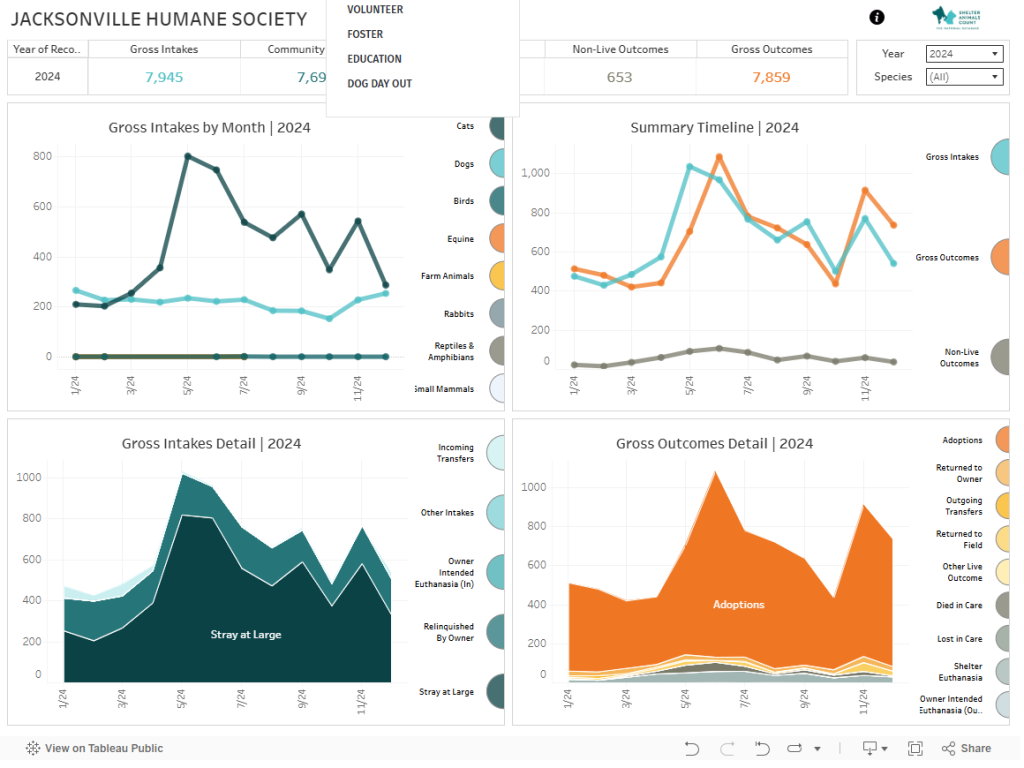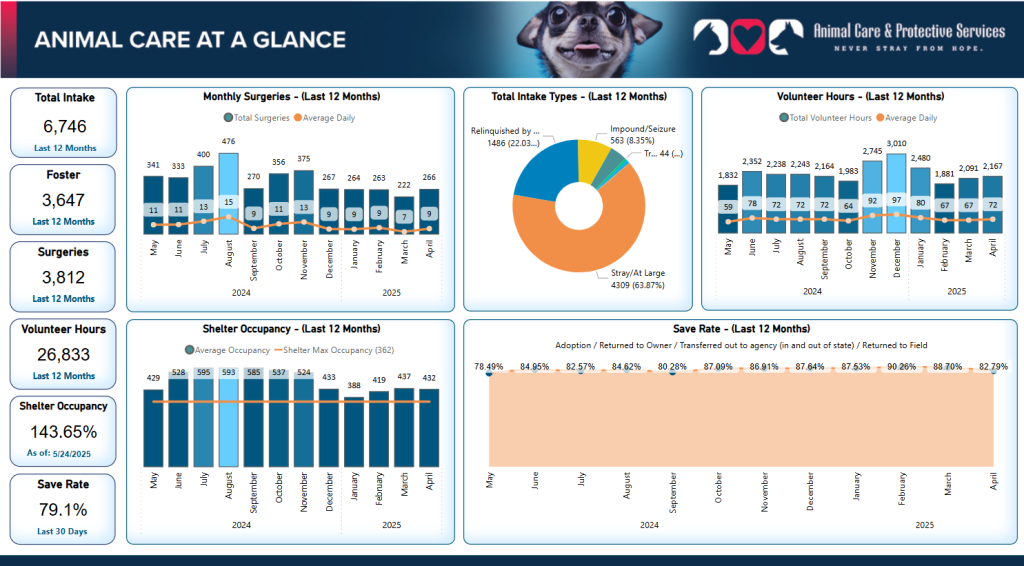Module 7: Get to Know a Shelter
Shelter Data Transparency and Standardization
Shelters, rescue groups, and other animal welfare organizations each have their own missions and operating policies, but they also play a role in their larger communities. Spay-neuter programs help reduce overpopulation, foster families provide a real-life home experience for animals, breed-specific rescues specialize in certain types of animals, safety net programs keep animals in their homes, trap-neuter-return programs manage community cats humanely, limited-admission shelters focus on high live-release rates, and open-admission shelters make sure that no pets are left behind. No one organization’s contribution is necessarily more important than another, but together they can shape a community safe haven that assures there is a safety net for each animal’s needs.
Ideally, each organization, whether supported by tax dollars or private donations, would publish its intake, outcome, and community service data for the public to see, even if it’s not mandated by their state. Transparency is best served when shelters publish their data using standardized data formats and definitions. Best practices also include sharing annual income and expense information via budget reports or copies of non-profit tax filings known as IRS 990 reports.
Since each type of organization operates in a unique niche, community-wide compilation of statistics provides a more comprehensive snapshot of progress than data from any single organization. Although total numbers and percentages are helpful in tracking regional trends over time, calculating statistics on the basis of the human population in the service area (e.g intakes per 1,000 residents) allows communities to benchmark their progress compared to other communities.
Shelter Animals Count is a national organization to which shelters voluntarily share data for regional and national reports. SAC supports the animal welfare community with reports, webinars, and an interactive dashboard of shelter and rescue data.
Try This

Florida’s Jacksonville Humane Society nonprofit shelter posts Shelter Animals Count’s data dashboard on its website for the public to track the organization’s impact. Explore the live interactive dashboard to see intake and outcome data by year, species, and intake and outcome categories.

Jacksonville’s municipal Animal Care and Protective Services shelter adds surgeries, volunteer hours, foster placements, occupancy, and save rate to its custom data dashboard. Explore the live interactive dashboard using customizable date ranges for shelter operations and community engagement.
In Florida, the Shelter Medicine Program at the University of Florida reports out annual data for all shelters in the state. In these charts, results are reported at the county level and normalized as intake or euthanasia per 1,000 residents. Reporting data this way reveals that rural counties, which typically have less funding and resources for animal services, have higher intake and euthanasia per capita than urban counties.


